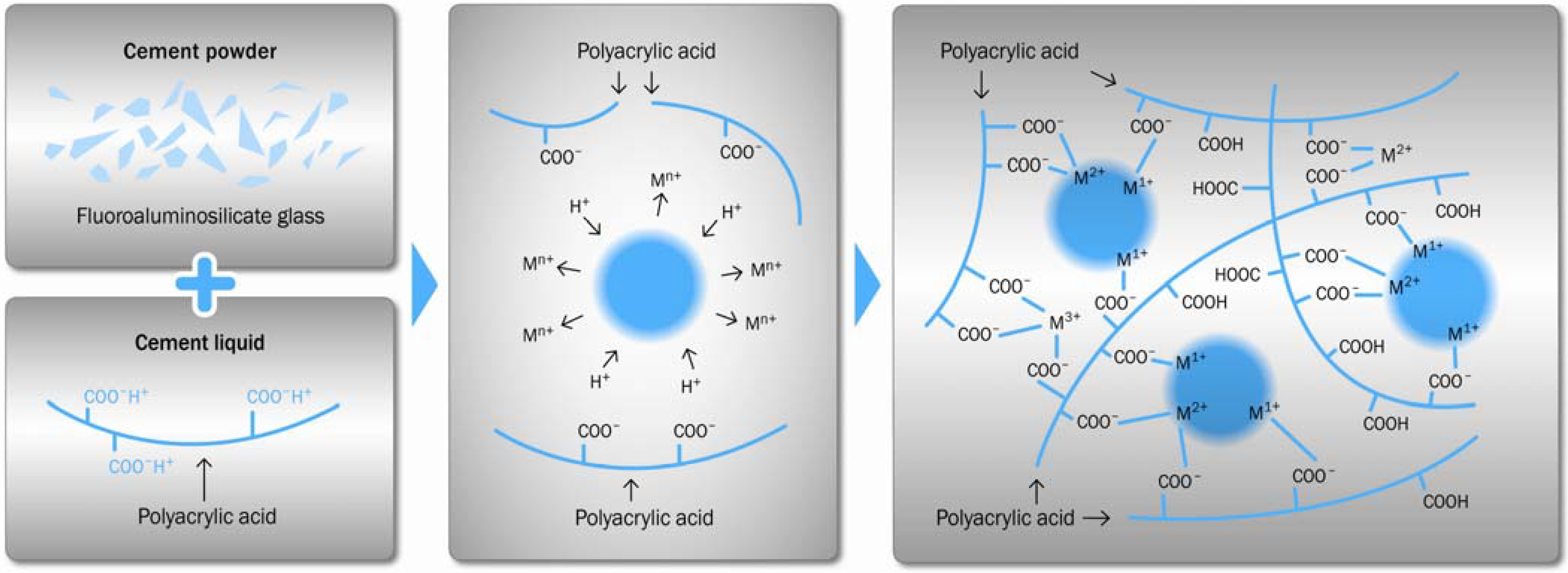| name | Glass Ionomer Cements (various types) |
| classification | Dental restorative materials |
| pharmacokinetics | Glass ionomer cements are not absorbed systemically. Their effects are localized within the dental cavity. Therefore, pharmacokinetic properties are not relevant to their use as a systemic medication. |
| suggested dosage | Dosage is not applicable. Glass ionomer cements are applied as a restorative material to specific dental areas. The amount required depends on the size and type of the cavity being treated. |
| indications | Glass ionomer cements are used for various dental restorations, including:
* **Class V restorations (pit and fissure sealant):** Used for small cavities, especially in the pit and fissure areas to protect against decay.
* **Class I, II, III restorations:** Used as fillings for cavities in the posterior teeth (molars and premolars) and anterior teeth (canines and incisors), and for replacing decayed enamel.
* **Luting agents:** For cementing crowns and bridges.
* **Base materials:** For providing temporary protection and support for deeper cavities.
* **Pulp capping and lining:** To protect the pulp of the tooth or seal dental tissues during certain treatments. |
| safety in pregnancy | Glass ionomer cements are generally considered safe for use during pregnancy. However, as with any medical procedure, it's important to discuss the risks and benefits with a dentist, especially in the first trimester. Limited data, so clinical judgment should be used |
| safety in breastfeeding | Glass ionomer cements are also generally considered safe for use during breastfeeding. Again, consult with the dentist to discuss potential risks and the best course of action. |
| side effects | | 1 | Sensitivity to cold or hot foods immediately after application | | 2 | Slight discomfort or pain at the treated area. | | 3 | Possible marginal discoloration (though some formulations are designed to reduce this) | | 4 | Allergic reactions (though less common than other dental materials) | | 5 | In rare cases, a reaction from a component in the cement can manifest as a local inflammatory response or a more systemic reaction. |
|
| alternatives | | 1 | Composite resins | | 2 | Amalgams (less common due to environmental concerns) | | 3 | Resin-modified glass ionomers (often a preferred alternative due to some properties) |
|
| contraindications | | 1 | Patients with known allergies to any components of the cement (e.g., fluoride, aluminum) | | 2 | Existing sensitivity to other dental materials. | | 3 | Situations where a more durable filling material is necessary |
|
| interactions | Glass ionomer cements do not interact with other systemic medications, as their action is localized within the mouth. |
| warnings and precautions | | 1 | Proper handling techniques are crucial to avoid accidental ingestion or inhalation of the powder. This is extremely important during procedures and the application process. | | 2 | Proper isolation of the tooth and treatment area. | | 3 | Proper mixing and application procedures should be strictly followed for successful restorations and patient well-being. | | 4 | Monitor the patient for any unusual symptoms following the treatment. This is standard practice for any dental procedure. | | 5 | Do not use on patients with conditions that would make them vulnerable to a reaction such as weakened immune systems. |
|
| additional informations | | 1 | Different types of glass ionomer cements have different properties and indications. Consult with the dentist to determine the best choice for individual needs. | | 2 | The patient's age and weight are not relevant factors in choosing a specific type of glass ionomer cement. The decision is based on the dental condition and clinical needs. | | 3 | Long-term durability and aesthetics may vary between different glass ionomer cement formulations. |
|
| patient details | |

